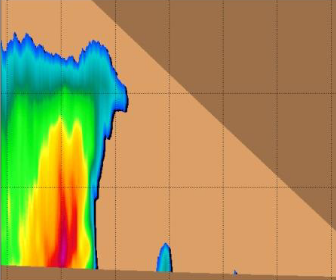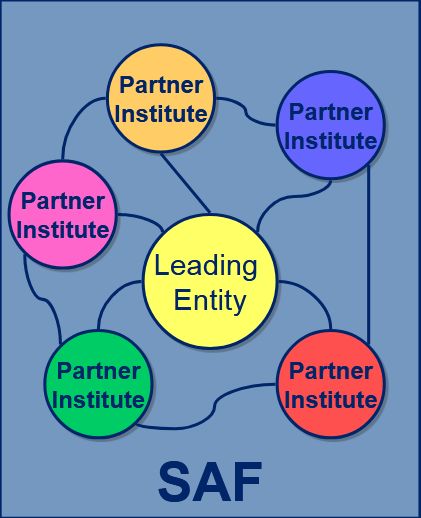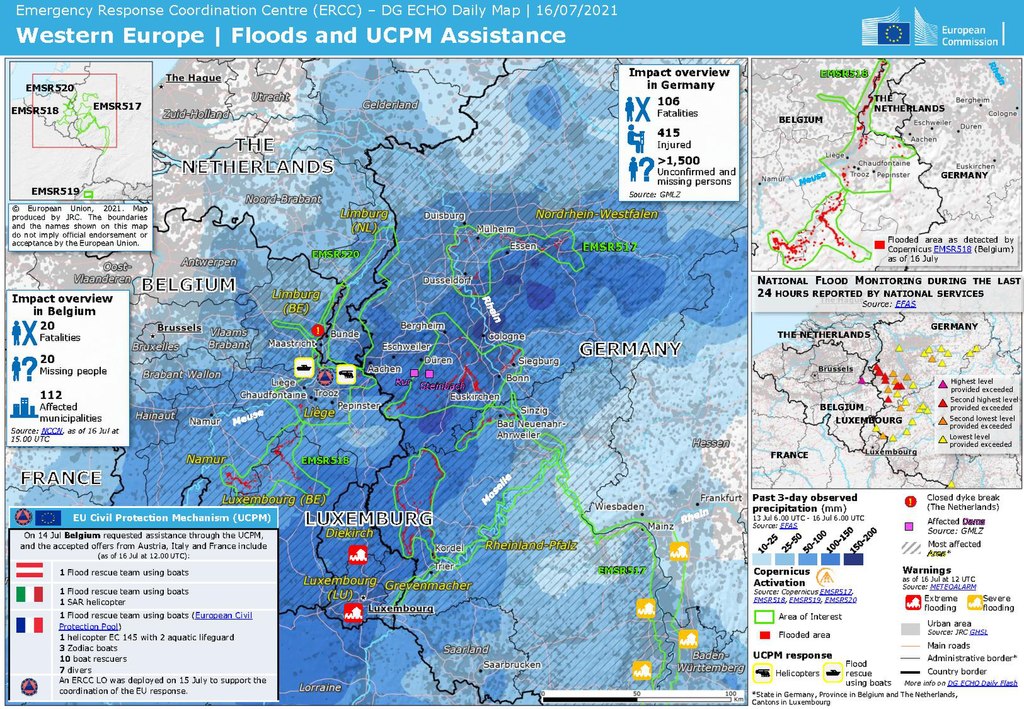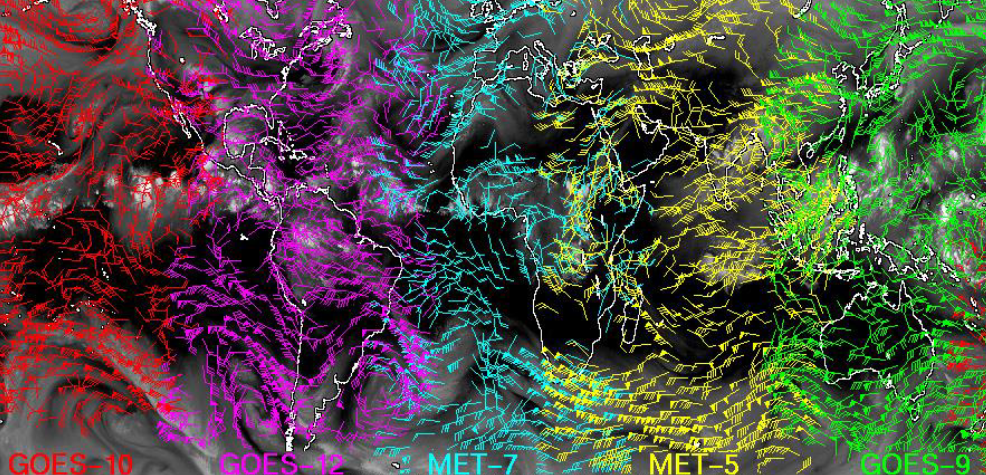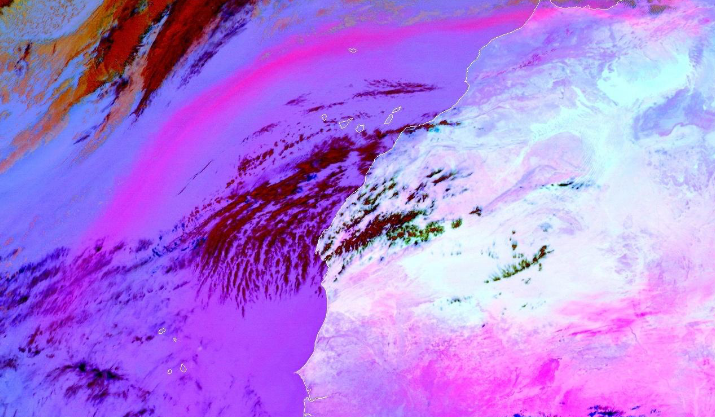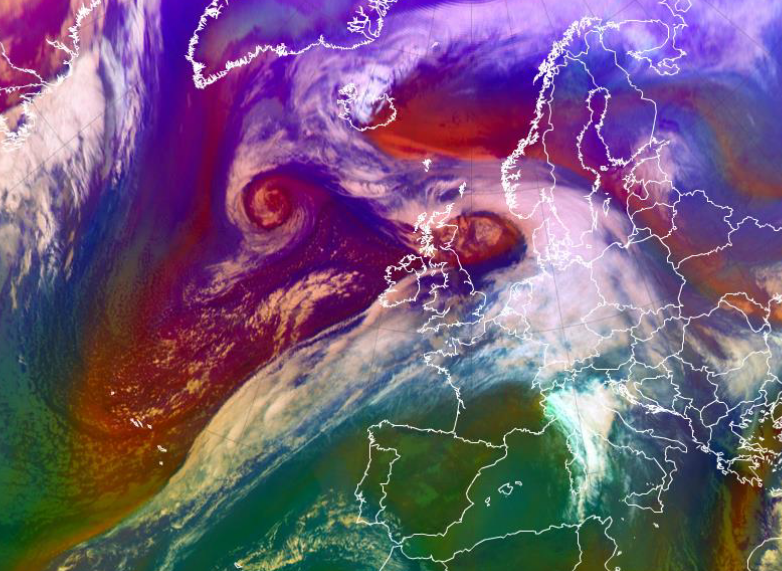Satellite skills and knowledge for operational meteorologist
Listed here are other resources related to Satellite skills and knowledge for operational meteorologist tag:
Note: click on an image to open the Resource
Anna Eronn gives an overview on the NWC-SAF PPS products and their applications, Thomas Heinemann presents the Eumetcast system.
The PPS package for Polar orbiting satellites produces Cloud Products for NOAA, METOP and the NPP-Suomi satellites. Products available are Cloud mask (CM), Cloud Type (CT), Cloud Top Temperature and Height (CTTH) and Cloud Physical Properties (CPP) during day CPP validated outputs are cloud phase and cloud liquid water path, as well as the auxiliary output fields cloud optical thickness, effective droplet radius and ice water path.
While the software package was originally aimed at producing NWC products for local satellite receiving stations, a subset of cloud products (CT and CTTH) are now also available in near real time via EUMETCAST within the NWC-EARS service.
In a second talk, Thomas Heinemann will present the EARS-NWC service. Data from the SAFNWC PPS package are computed at EUMETSAT headquarter and distributed via Eumetcast service to end-users.
Andreas Wirth gives an overview on the NWC-SAF ASII product and its applications, Eunha Sohn presents the NWC-SAF products adapted to the Korean COMS satellite.
PGE10 of the SAFNWC/MSG provides an automatic satellite image interpretation in terms of conceptual models (CMs). Conceptual models are important tools for forecasters in diagnosis, nowcasting and very short range forecasting; they describe a synthesis of typical features in satellite images as well as in other synoptic material (for instance numerical model output parameters) and the physical processes causing them. A CM diagnosis cannot only be used for detection of an ongoing process but also for the determination of the stage of development within this process.
This presentation will focus on the practical applications of ASII by showing examples of analysed synoptic weather situations.
In a second talk, Eunha Sohn from the Korean Meteorological Service will talk about applications of NWC SAF modules such as RDT, CRR, HRW and ASII in KMA, ongoing works and future works related to NWC SAF.
Frans Debie gives a presentation on the development of Rapid Cyclogenesis, their life cycle and the numerical parameters involved.
Extratropical cyclones, sometimes called mid-latitude cyclones or wave cyclones, are a group of cyclones defined as synoptic scale low pressure systems that occur in the middle latitudes and are associated with fronts (cold front, warm front and occlusion) and horizontal gradients in temperature and dew point , known as baroclinic zones. Extratropical cyclones are the everyday phenomena which, along with anticyclones, drive the weather over much of the Earth, producing anything from cloudiness and mild showers to heavy gales and thunderstorms. Evolution of these depressions can be recognized in the developing of the cloud systems. These cloud developments are the footprints of physical processes in the upper air. In case of explosive deepening it is called rapid cyclogenesis. Satellite imagery, especially recognition of cloud patterns and water vapour structures, can be a great help for marine forecasters to find the area where these cyclogenesis occurs. The deepening of the depression, where you can expect the strongest wind speeds at sea surface and what will be the distribution of the precipitation are issues which will be covered during the lecture. In general, the lecture will give insight in physical processes which can explain the development and life-cycle of rapid cyclogenesis by using single channel satellite images and RGB-images in combination with NWP model fields.
Gunnar Noer gives a detailed presentation on the formation of Polar Lows, the climatology and forecasting methods.
Polar lows are small but fairly intense lows that develop during cold air episodes during the winter season in the marine Arctic. The lecture will address some of the basic formation processes, the climatology and traditional forecasting based on deterministic short range models. Recently, Polar Lows are tracked using fine scale EPS based on the UM, and presently the Harmonie 2,5 km model. Results are represented as an estimate of probability for PL tracks, wind and precipitation.
Izolda Marcinoniene presents 2 case studies on severe thunderstorms over Poland and the Baltic States.
Length: 30 minutes.
Nowcasting of severe convective storms is still one of the most challenging tasks for operational forecasters. Satellite data are very useful in convection nowcasting because they enable a detailed monitoring of the various stages of convection; from the pre-convective environment to specific features on the tops of the mature convective clouds. Also, future MTG system will provide even better tools for convection nowcasting: satellite data with better temporal (every 2.5 min) and spatial resolution.
In this lecture, severe weather cases of 29 July 2012 and 30 July 2013 will be analysed by Izolda Marcinonienė (Lithuanian LHMS), mainly using MSG satellite images and ECMWF data. The first event includes a more expanded North-Eastern European area – from Poland (where the unstable situation started) towards the Baltic States (where the severe weather phenomena developed) to Finland (where they ended). The second event hit only Lithuania, but local very heavy rain reached even the disastrous phenomenon criteria and will be shortly presented as well.
Petra Mikus reports on nowcasting of severe weather using different satellite and NWP based products.
Length: 30 minutes.
Nowcasting of severe convective storms is still one of the most challenging tasks for operational forecasters. Satellite data are very useful in convection nowcasting because they enable a detailed monitoring of the various stages of convection; from the pre-convective environment to specific features on the tops of the mature convective clouds. Also, future MTG system will provide even better tools for convection nowcasting: satellite data with better temporal (every 2.5 min) and spatial resolution.
Various satellite products as well as their advantages and disadvantages for analysis and monitoring of the convective development over the Southern and Central Europe will be shown in the lecture presented by Petra Mikuš Jurković (DHMZ, Croatia). Also, the most interesting convective episodes detected during the 2.5 minute rapid-scan experiments with the MSG satellites will be analysed in detail.
Lothar Schueller gives an overview on the SAF structure and the generated products.
Length: 30 minutes.
SAFs are dedicated centres of excellence for processing satellite data, achieved by utilising specialist expertise from the Member States. SAFs generate and disseminate operational EUMETSAT products and services and are an integral part of the distributed EUMETSAT Application Ground Segment.
Each SAF is led by the National Meteorological Service (NMS) of a EUMETSAT Member State, in association with a consortium of EUMETSAT Member States and Cooperating States, government bodies and research institutes. The lead NMS is responsible for the management of each complete SAF project. The research, data and services provided by the SAFs complement the standard meteorological products delivered by EUMETSAT’s central facilities in Darmstadt, Germany.
In this training module, you get an overview on the life cycle of Upper-Level-Lows and you will learn more about the impact on local weather.
Upper-Level-Lows (ULLs) are a very common phenomenon in mid-lattitudes. They are usually associated with cold and rainy weather that can last for several days. When they remain stationary over a period of time, the can bring considerable amounts of rainfall locally. This synoptic situation has led in the past to floods and damages in infrastructure as will be show by the example of the Central European Flood in summer 2021.
This training module focusses on the meteorological aspects of ULLs, describes the life-cycle and throws a spottlight on the involved physical processes that accompany this meteorological phenomenon. Each stage of development is exemplified by satellite loops and corresponding NWP parameters. Exercises will help you to check the acquired knowledge.
Marianne Koenig gives a short introduction to some established methods to derive meteorological products from satellite data, including the benefits and downsides of products.
Length: 30 minutes.
The course gives a short introduction to some established methods to derive meteorological products from satellite data, including the benefits and downsides of products. Product examples will mainly focus on the MSG products, derived centrally at EUMETSAT and within the NWC SAF project.
Jochen Kerkmann discusses the characteristics of the Dust RGB and presents the challenges of detecting dust clouds (like low level dust at night over water).
Length: 30 minutes.
Dust and smoke detection with SEVIRI RGB products: the lecture focuses on dust and smoke clouds and their identification in RGB products. The first part looks at the solar channels and the natural colours RGB product; the second part presents the triple window IR channels and the resulting dust RGB product. Some challenges of detecting dust clouds (like low level dust at night over water) will be discussed.
Liliane Hofer highlights the properties of the Airmass RGB.
Length: 30 minutes.
The Airmass RGB is for sure one of the more complex RGB composites as it uses brightness temperature differences and not single channels on each colour beam. But - as this presentation will show - it is nevertheless a very powerful tool for discriminating between different air masses and highlighting dynamic properties of the atmosphere.
Maria Putsay talks about how to create an RGB image, how to extract, distill, and package the data into products that are easy to interpret and use for forecasters.
Length: 60 minutes.
What is the benefit to work with RGBs not only with single channel images? How to create an RGB image from raw data? How to create a good RGB image? How to enhance features and which features to enhance? Why use standard RGBs? How to extract, distill, and package the data into products that are easy to interpret and use for forecasters?





